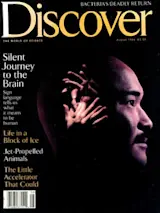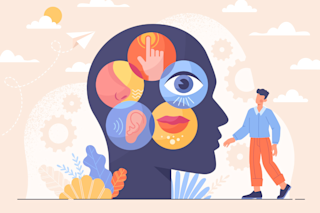As Ursula Bellugi delivers her talk, an expert in sign language translates for her. The signer's hands hurtle furiously through the air, fingers dancing as though possessed. They swoop through the air, puncture it with staccato stabs, furl and unfurl to form shapes in space. The signer's face is equally animated. Expressions flit rapidly across it, conveying nuance, inflection, and grammatical detail unimaginable to a casual, nonsigning observer. And all at blinding speed.
Bellugi, a bustling neuroscientist, is making a point: anything she can say, the signer can "say." Sign is bona fide language. It's not mime, not a poor, pidgin derivative of spoken tongues--it's a richly endowed language in and of itself. And it is Bellugi herself who over the past two decades has convinced a doubting world of that reality.
But as director of the Laboratory for Cognitive Neuroscience at the Salk Institute for Biological Sciences in La ...














